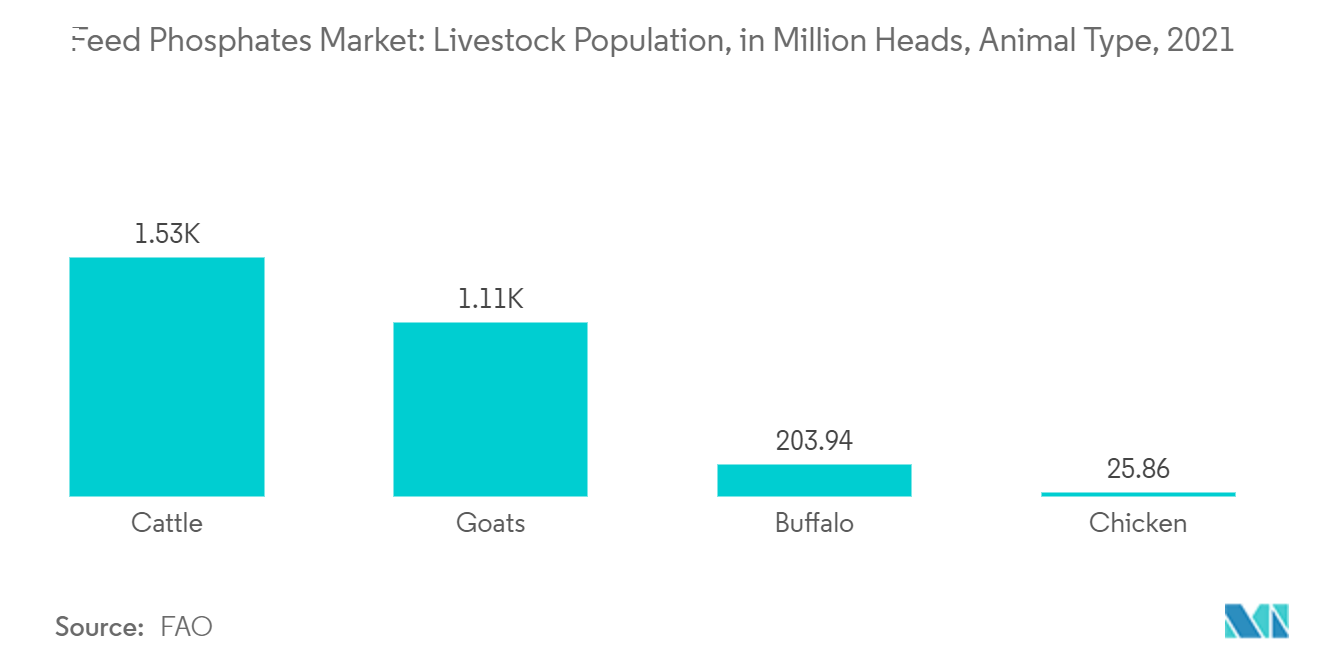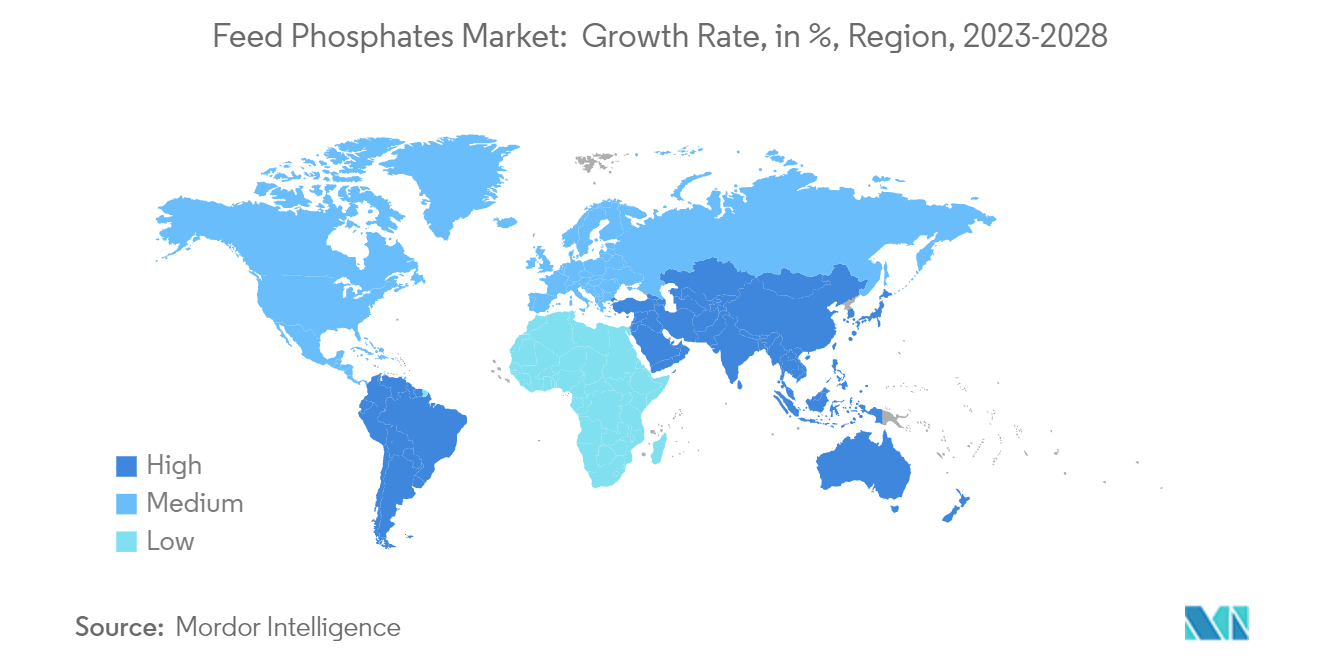Market Trends of Feed Phosphate Industry
Increasing Industrial Livestock Production
- The growing demand for livestock products has been driving significant changes on the supply side aimed at improving livestock product yields. New capital-intensive technologies have made poultry and pig meat production in industrial-style production facilities possible across regions, such as North America, Europe, and Asia-Pacific, especially in countries with limited land.
- According to the Food and Agriculture Organisation (FAO), the global cattle population witnessed an upward trend over the past four years. World meat production was forecasted at 360 million tons (in carcass weight equivalent) in 2022, up 1.2% from 2021. A significant portion of the growth was predicted to come from Asia, primarily from China's increasing production of pig meat and South America's increasing production of bovine and poultry meat, with relatively stable production elsewhere. The decline in Europe was predicted to largely offset this growth.
- The meat production industry witnessed an upward trend in the recent past, especially in developed countries, such as the United States and European countries, with reduced land usage. This factor boosts livestock and meat production, thus accelerating the demand for feed additives for the growing livestock population in these countries.
- Industrial-scale livestock production makes optimum use of high-quality feed to improve efficiency in the production process, improve feed conversion ratios, and enhance animal muscle mass and protein content. With the adoption of industrial-scale livestock production by a larger number of farmers, feed additives' production needs to improve to cater to this large production base of high-quality compound feed. This is expected to boost the global feed additives market during the forecast period. Thus, the increasing milk and cattle production drives the feed additives market growth.
- Additionally, meat consumption has been changing toward poultry. In lower-income developing countries, poultry reflects a lower price as compared to other meats. In contrast, in high-income countries, this indicates an enhanced preference for white meats, which are easier to prepare and perceived as a better food choice. Poultry meat is projected to represent 41% of all the protein from meat sources in 2030 across the world. According to the United States Department of Agriculture (USDA), in 2021, the consumption of poultry meat in the United States was 17,158 thousand metric tons. China was the largest consumer of chicken, with a consumption rate of 15,032 thousand metric tons, followed by Brazil at 10,280 thousand metric tons, and Canada at 1,411 thousand metric tons.

Asia-Pacific Dominates the Market
- With rapid economic growth, the demand for meat protein is rising in Asia, especially in China, India, Malaysia, Vietnam, and Thailand. This increased demand for meat protein has triggered meat production in the region, where uptake of compound feed has increased and is expected to show a higher growth rate. Apart from improving nutritional value, compound feed is gaining importance in improving meat quality.
- The compound feed industry in China has risen tremendously over recent years. According to a survey by Alltech, the feed output in China had increased significantly last year, making it the country with the highest increase in feed production by tonnage. China is the leading country in feed production in the region, accounting for 261.42 million metric tons, followed by India, with 44.05 million metric tons during the year 2021.
- India ranked first in cattle and buffalo population last year. It was the largest producer of milk and buffalo meat, followed by the second-largest producer of goat meat and the third-largest poultry producer. India produced 122.04 billion poultry eggs in the year 2021. The major growth drivers are breed improvement, low organic feed market, penetration, increasing formal offtake, etc.
- According to industry sources included in a study by the United States Department of Agriculture (USDA), in the year 2021, corn and soybean meal dominated the commercial feed market in India, with other coarse grains such as limited quantities of spoiled/lower quality wheat and other oilseed meals supplementing the market depending on comparative pricing. Therefore, an increase in domestic consumption of protein-based products in Asian countries, various promotional initiatives by the industries, and the decline of the African swine fever (ASF) in various nations are some of the essential factors expected to boost the growth of the market studied in the coming years.


